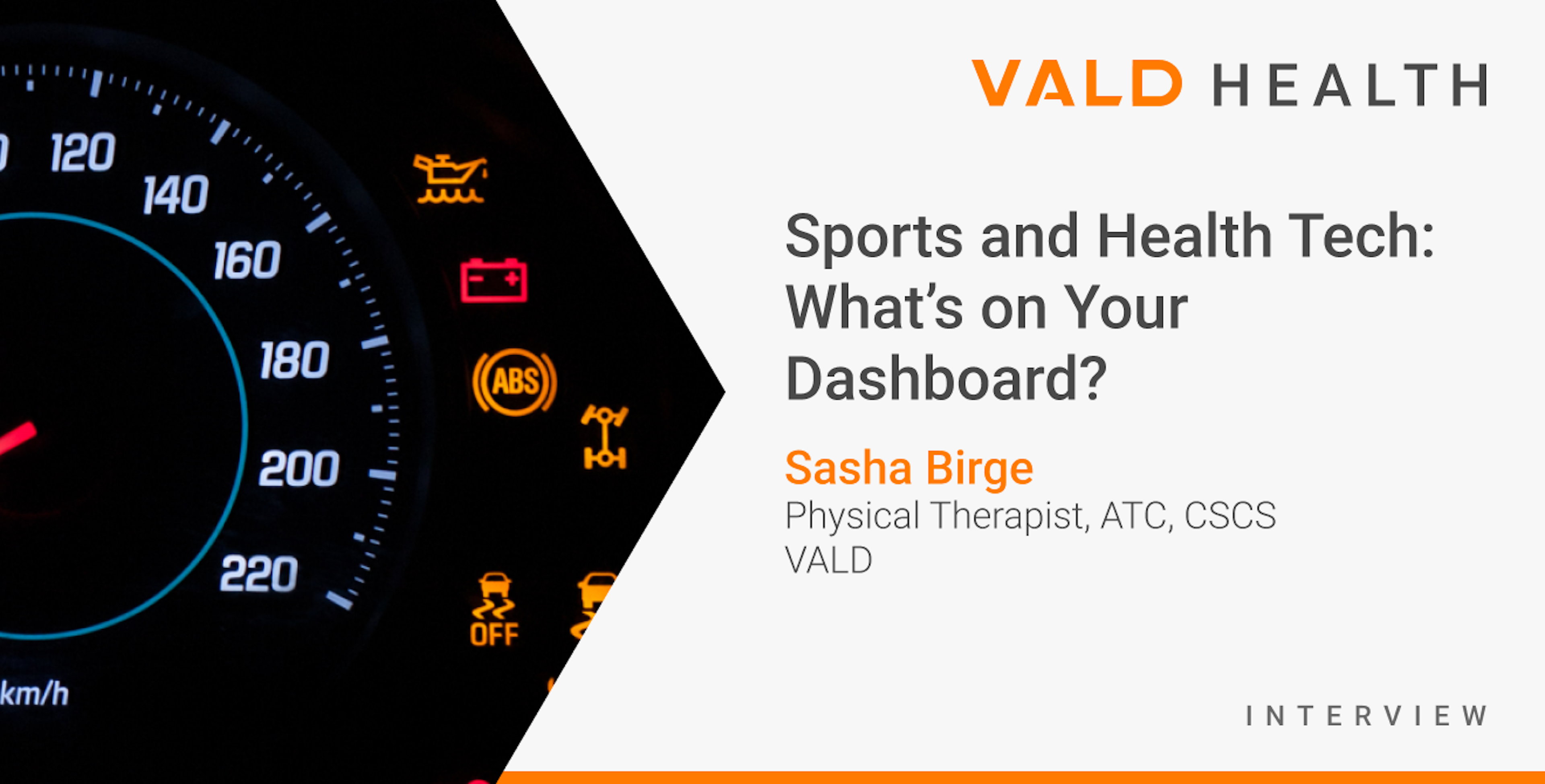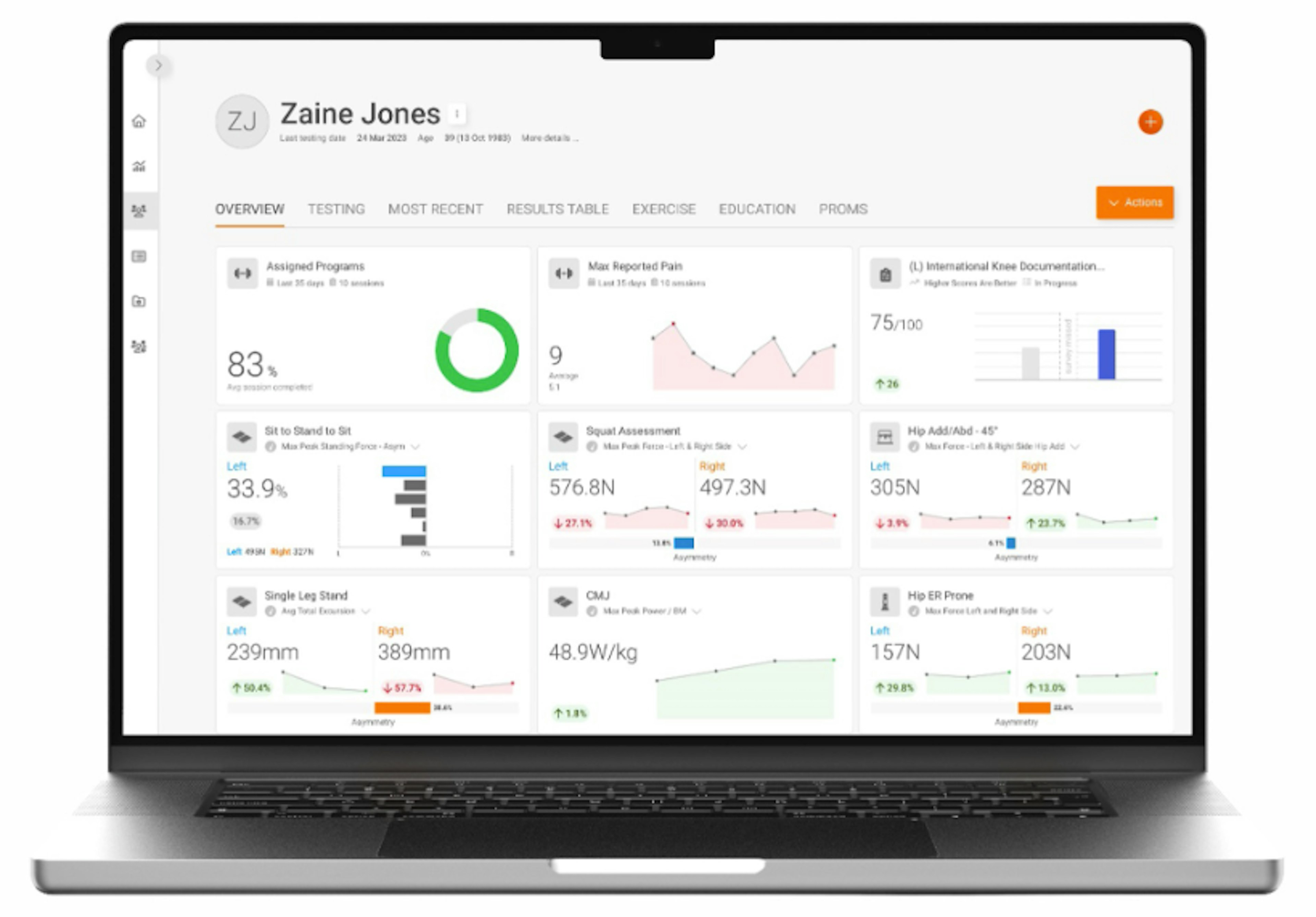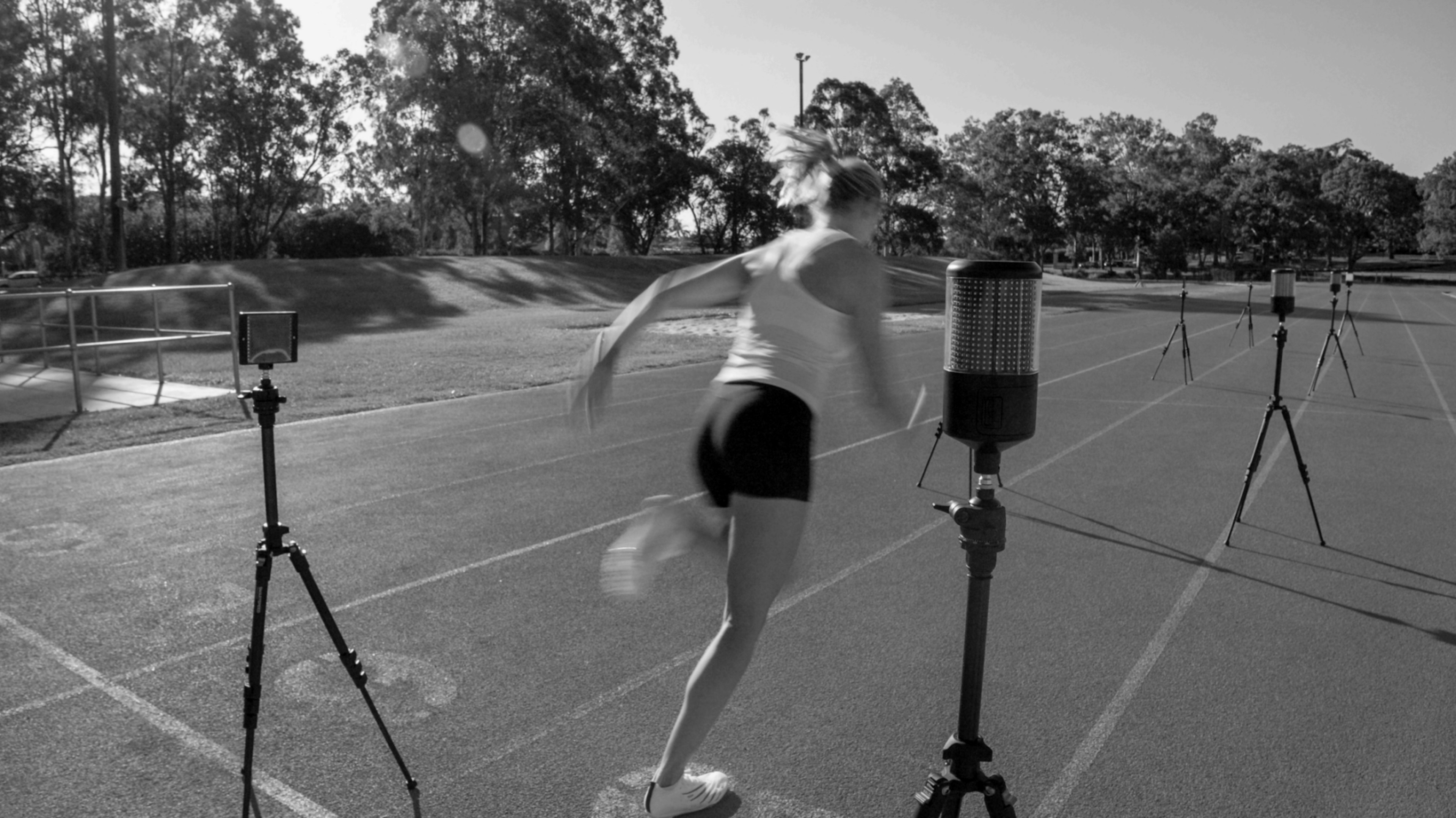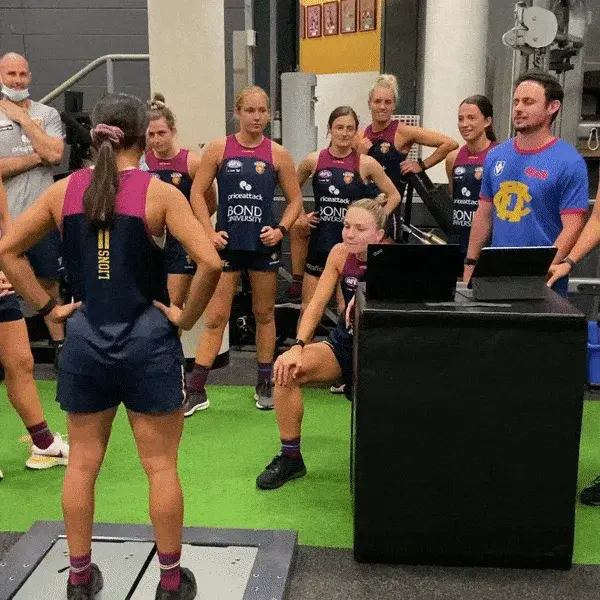Sports and Health Tech: What’s on Your Dashboard?

Sasha Birge – Physical Therapist, ATC, CSCS at VALD
During a recent visit ‘back home’ to the US from my base in Australia, I was fortunate enough to meet with some exceptional practitioners in both the high performance and clinical health spaces. There were many highlights from this trip, but one that stood out was a presentation by my friend, Gio Grassi, at the National Strength and Conditioning Association (NSCA) New Jersey state chapter event.
I’ve often struggled to articulate the utility of technology to health professionals, who may be unfamiliar with its application – but Gio did it perfectly:
“Think about sports and health assessment technology as the features on the dashboard in your car – the more there are, the more you know.”
When cars were first invented, the dashboard was bare. Over time, the advent of new sensors and technology meant that the dashboard became more robust. The features on our dashboard provide us with information that enables us to make decisions intended to optimize our driving experience or enhance safety.
Could you still drive your car without these features? Of course! But, you might run out of fuel without a gas gauge, get pulled over without a speedometer or overheat the engine without a temperature reading. In short, without a dashboard, you’ll be missing crucial insights that inform the way you drive.
So how does this relate to clinicians and the patients we treat?
The patient is the car and the suite of assessment technology is our dashboard.
Could we treat the patient without technology? Of course. But, just like a car, the insights gained from technology – and the decisions they inform – continue to enhance our pursuit of better health and enhanced physical function.
So, whether it’s a Formula 1 car competing for a title or a second-hand sedan just trying to get from point A to B; both have dashboards displaying important information that helps them win the race and arrive safely at their destination.
Therefore, whether you’re an Olympic athlete training to win gold or an elderly person working to maintain physical independence, the ability to measure the qualities required for both tasks means that you can make more informed decisions on how to be successful in either endeavour. This is where technology becomes your dashboard.

VALD have made this technology available to health professionals to access a more enhanced “dashboard”, enabling them to generate insights that help to ensure a more informed decision-making process.
How does this additional information impact a health professional managing patients?
Put simply, it provides data which was not previously accessible in clinical settings. This data allows us to create hyper-specific management or treatment plans by focusing on the specific deficits and measuring the impact of our interventions. Below are some examples of this in action:
Knee joint injuries – generic quad strengthening vs eccentric/concentric focus:
An individual who sustains a knee joint injury will experience quadriceps atrophy and weakness.
Traditionally, we would assume that this muscle group becomes globally weak and therefore we assign a global strength program to address this. This is a good place to start, however as rehabilitation progresses we need to get more specific with our exercise prescription.
Performing a squat assessment on ForceDecks, we can see not only exactly how strong their injured leg is, but we can see during which movement phases (eccentric or concentric) the muscles are weak, and even compare them with the uninjured side, which is crucial for both benchmarking strength and establishing milestones for rehabilitation.
Squat assessment being performed on VALD’s ForceDecks.
With additional and specific information about the deficit, we can personalize our exercise intervention to include exactly what is needed. For example, if a client presents with only an eccentric deficit, we can select an exercise such as a “2-up/1-down leg press”, to specifically target the eccentric portion of the movement.
We recently published an article on the role of technology in ACL rehabilitation.
Balance – is standing on one leg enough?
Traditionally, balance is assessed by how long a client can balance with a subjective recording of observations of how well the balance task was performed (e.g. mild sway; moderate sway etc).
Using ForceDecks, however, a clinician is provided with exactly how much a client’s center of pressure deviates from their starting position and in what direction (or directions).
This provides key insights into not only how their client navigates the balance task, but also what to target in order to improve their balance.
For example, clinicians often prescribe balance tasks that are unstable in all directions. However, the data provided by the ForceDecks can indicate in which plane of movement the client is most unstable, and this in turn tells the clinician what exactly to focus on in order to help their client improve. This article showcases the power of balance testing using ForceDecks in a clinical setting.
Example of single leg balance assessment on ForceDecks with real-time results.
Testing speed – measure point A to B, and everything in between.
Traditionally, speed is assessed with a stopwatch – this has not proven to be very reliable or valid. Additionally, this only measures the end result, but it does not capture the unique components of a sprint.
Using SmartSpeed, we can measure timing at specific intervals. Instead of hand-timing a 40-yard dash (notoriously prone to error), we can precisely measure 10, 20 and 40 yard splits, informing of an individual’s acceleration, transition, and top speed capability respectively.
Knowing which segment of a sprint an athlete may need to improve in helps determine exactly what training methodology is selected to help improve their performance.

Power – it’s not just about jump height; it’s how you get there
Jump height is an important metric in sport. It can be both an indicator of athletic ability and a determinant of success in certain activities. Traditional methods of measurement account only for the outcome, but in order to improve jumping ability, we need to understand the process.
By assessing jumps using ForceDecks, we can evaluate key components of the take-off to determine where an athlete may need improvement, and therefore prescribe targeted exercises focused on improving that specific characteristic of the jump. More information of this can be found in our article on applying ForceDecks to the plyometric continuum.

The hamstring plays a role at the knee and the hip – but how to differentiate?
It is well established that hamstring strength is important for both sport performance and injury prevention. The hamstring is also unique because it acts upon both the hip and the knee. Without an accurate way of assessing the strength of hamstring, especially in different positions, we can’t be truly equipped to train the hamstrings properly.
The NordBord enables us to not only measure overall strength of the hamstrings, but also to evaluate the muscle’s force production capability in different positions. This allows us to both determine where the athlete may be susceptible to injury and exactly what training modalities may be most effective in targeting a deficit.

Sure, we’ve been improving patient’s health without a dashboard, but what have we been missing?
Because the dashboard allows us to see more, it can help us do more. Having a more robust dashboard gives us more context about our patients, which in turn helps us to manage their health journey more precisely.
If you would like to know more about how to integrate VALD’s human measurement technology into your organization and help build out your dashboard, please reach out here.
Sasha is a licensed Physical Therapist and Athletic Trainer, with a background in Strength and Conditioning. Sasha uses the VALD technology regularly with patients and athletes he sees in order to help assess physical impairments, monitor progress through rehab, and inform return to play decision-making. The ForceDecks are a mainstay in Sasha’s clinical practice.
